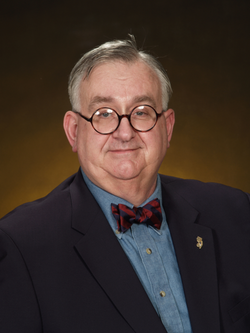The thoughts behind this particular column have been rumbling around in my head since mid-September. These ruminations began to evolve during my visit to Dallas for the IAFC convention. My buddy Jack Peltier and I spent some real quality time at the Fire Rescue International conference of the International Association of Fire Chiefs.
We staffed the organizational booth for the Cumberland Valley Volunteer Fireman's Association and our Respondersafety.com working group. The pressure on Jack and I was tremendous, as all of our associates from Delaware were enjoying the annual convention of the Delaware Volunteer Fireman's Association in Dover. He and I had to do the work of many men. Thankfully we had the help of our Director of Training, Jack Sullivan.
Folks, I want you to know that it was tough. Three men were called upon to do the work of a normal cast of about a dozen people (or characters as they say in the movies). The stress was great, but we were tough. We were up to the task. However at the close of business, we also knew how to handle our stress with equal amounts of stress relief. However, that is a story for another day.
Rest assured that we were able to get the word out about the efforts of our group in the area of highway safety. Let me share one important fact with you. A great many of the people who stopped by our booth were already frequent visitors to our site. This made us all feel pretty good.
I will tell you what has not made me feel very good at all. The treatment that our association's Public Safety Vest proposal received at the hands of the International Safety Equipment Association was not all that great. A new standard was forward to the American National Standards Institute which included the concept of the public Safety Vest that we have been advocating for some time now.
The standard creates a sleeveless vest type garment specially designed for police officers, EMS providers, and firefighters who are on the highway to mitigate an emergency. Unlike previous clothing that was intended primarily for highway construction and maintenance workers, the new 207 standard includes features needed by emergency responders such as a cut out side for police officers’ weapons and EMS belt- carried equipment.
There is also an optional feature allowing the identification of police, fire and EMS responders by color on a panel or trim. The Public Safety vest can be sufficiently large to be worn over a firefighting turn out coat, and includes more square inches of retro-reflective material.
We strongly opposed the standard as it was released because it contained our recommended tear-away features as an option. We have strongly pushed for the need for making the tear-away feature a mandatory part of the standard. However people in the industry fought us all along the way.
In all of our discussions with firefighters, law enforcement, EMS, and towing and recovery personnel, the message we heard time and again was that the seams and closures in the new garment should be of a break-a-way/tear-away style. The reasoning is that should a wearer become hooked on a passing vehicle, the vest would come apart without dragging the emergency responder down the highway. Break-a-way technology exists today and most manufactures offer other ANSI garments with all or some break-a-way features.
The canvass results were tabulated in July. The tally included a sufficient number of objections in favor of mandatory break-a-ways to prevent the process from moving forward. Amazingly, ISEA ignored these comments and simply reissued the exact same standard for a second canvass. On October 2, 2006, the result of the second canvass was received by ISEA. Apparently a sufficient number of canvass reviewers agreed to change their vote to support the new standard with optional break-a-way features rather than mandatory.
Following internal rules, ISEA asked the American National Standards Institute (ANSI) to review the new standard. This process should take about two or three weeks. A favorable decision is expected which would mean the standard likely will be officially adopted during the month of October 2006.
I have been a member of NFPA technical committees now for more than 30 years.
This ISEA action would be the equivalent of an NFPA committee not liking the results of their ballot and simply issuing what they want to issue. As one of those who were canvassed, I am displeased with the treatment that we received.
However, we here at the CVVFA are a resilient lot. We will continue the battle to create a standard that reflects the needs of people who really operate on the highways of North America. Like you, I am tired of people telling me how to do my job.
The CVVFA is taking action on several fronts relative to the new standard. ERSI Director of Training Jack Sullivan and Chief Instructor Ron Moore are developing curriculum changes to the CVVFA’s current highway incident scene safety training offerings. The new information will advocate purchasing and using public safety vests with break-a-way features.
We strongly opposed a section of the standard as written because tear-away features were not made mandatory. The standard allows break-a-ways to be optional. We strongly pushed for the need for making the tear-away feature a mandatory part of the standard. However unidentified people on the ISEA technical committee fought us all along the way.
We are working to make things better in spite of this adverse decision. Rest assured that we will keep up our efforts on this and a number of other fronts.


